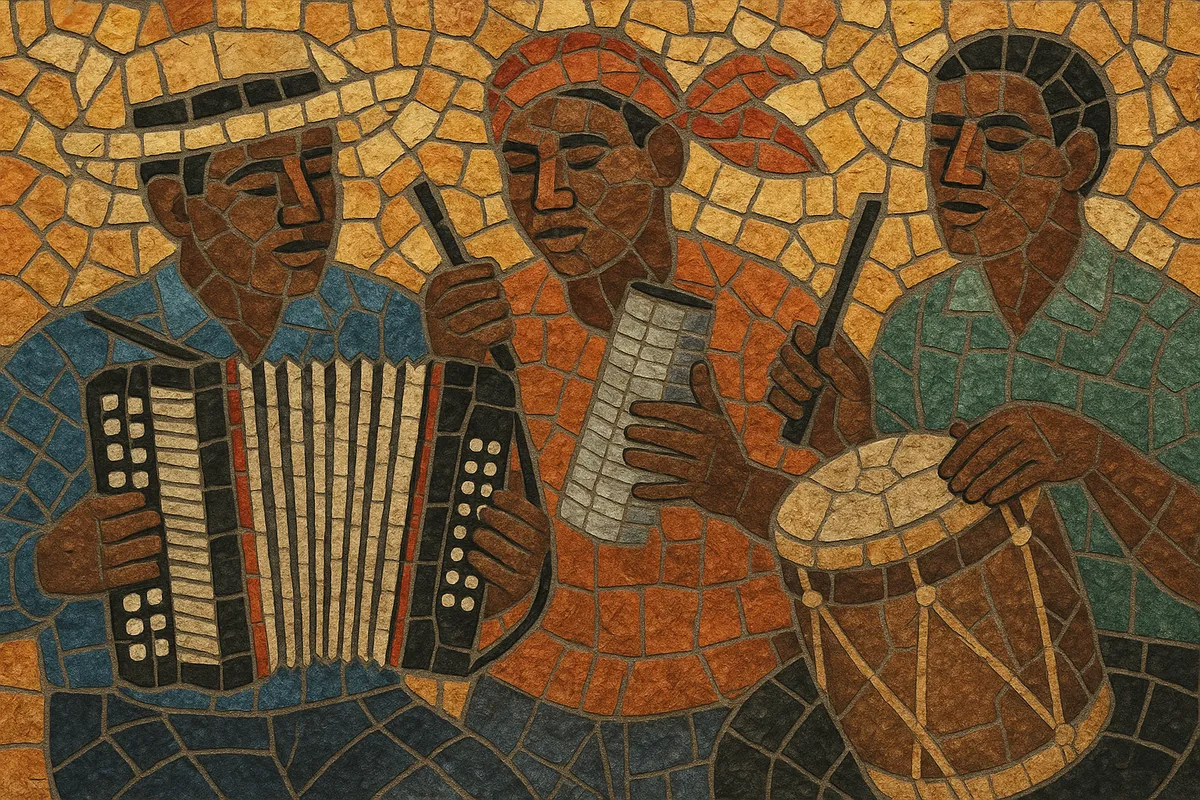
Merengue típico, also known as perico ripiao, is the original rural accordion-driven form of Dominican merengue that emerged in the Cibao region. It is characterized by a nimble diatonic accordion, the metallic scrape of the güira, and the two-headed tambora drum, creating a propulsive 2/4 groove designed for communal dancing.
While harmonically simple (often revolving around I–IV–V progressions), the style is rhythmically intricate, featuring straight “derecho” feels, the more syncopated pambiche, and extended jaleo sections where the accordion and saxophone improvise rapid-fire riffs. Modern ensembles frequently add bass, congas, and sax to amplify the drive, but the core texture remains earthy, fast, and celebratory.
Merengue típico took shape in the late 19th and early 20th centuries in the Cibao region of the Dominican Republic. Drawing on European social dances like the waltz, polka, and mazurka, and fusing them with Afro-Dominican rhythmic sensibilities, local musicians forged a distinctly Dominican dance music featuring accordion, güira, and tambora. By the 1910s and 1920s, ensembles known as perico ripiao were already animating rural festivities.
During the 1930s and 1940s, merengue gained national prominence, and típico ensembles continued to thrive in rural dancehalls and patronal festivals. Although urban big-band merengue and later orchestral formats grew in popularity, típico preserved the foundational instrumentation and repertoire, serving as a cultural touchstone for Dominican identity.
From the 1960s onward, virtuoso accordionists such as Tatico Henríquez expanded the music’s vocabulary with blazing jaleos, harmonic embellishments, and a driving rhythmic attack. Bands began to incorporate bass guitar and saxophone for greater volume and color, while still centering the güira–tambora engine.
Today, merengue típico remains a vibrant tradition, both in the Dominican Republic and in diaspora communities. Contemporary leaders maintain the rural roots while pushing arrangements, speed, and showmanship. The style continues to influence Dominican popular music and intersects with modern aesthetics without losing its social dance function.

